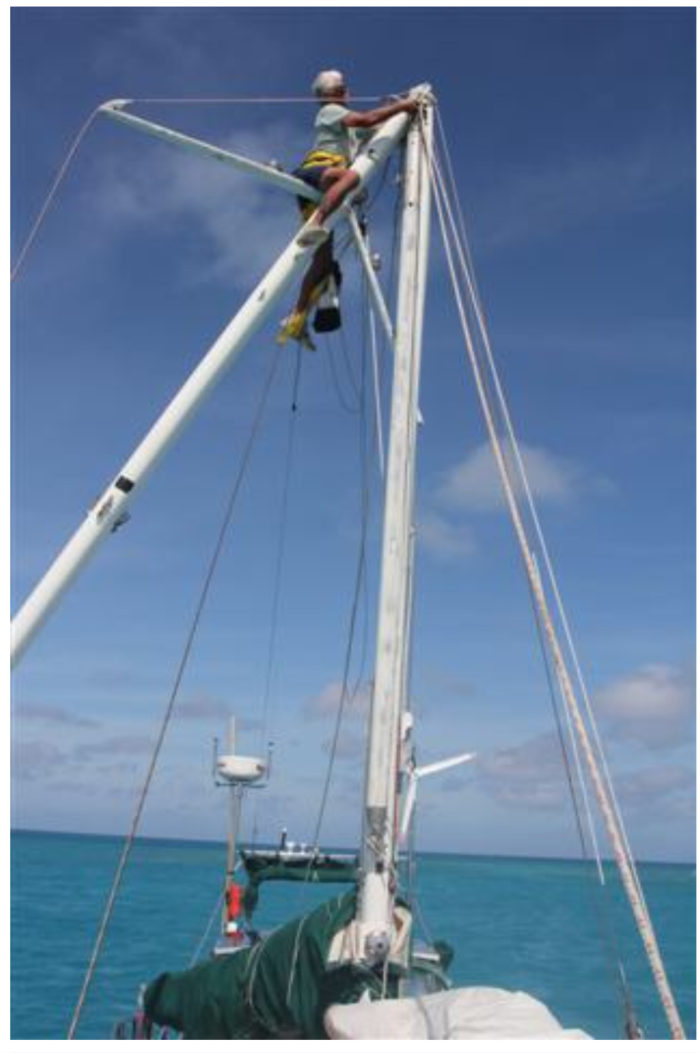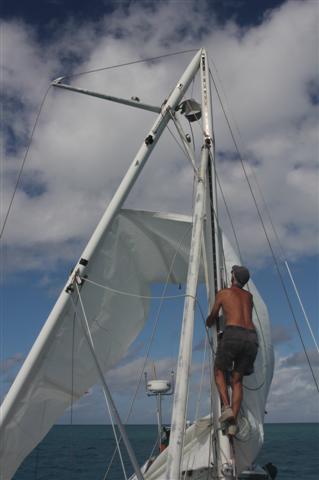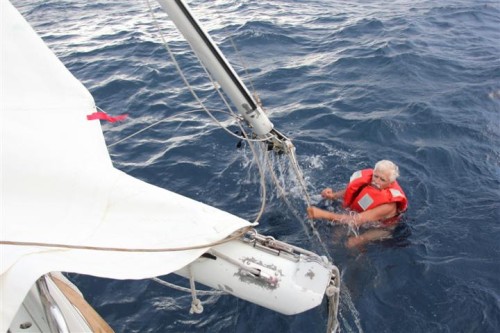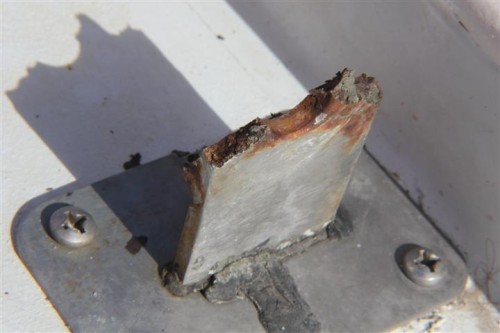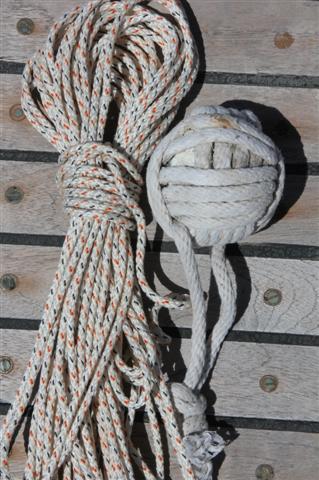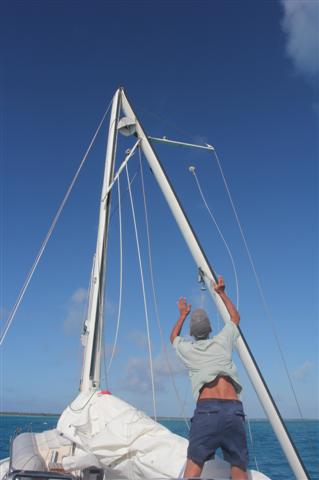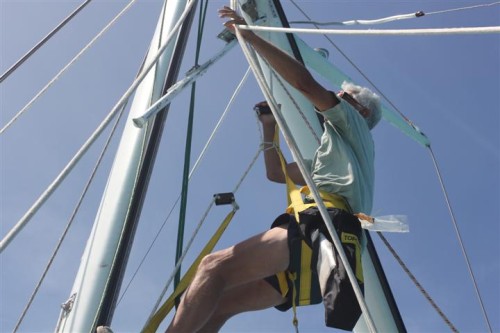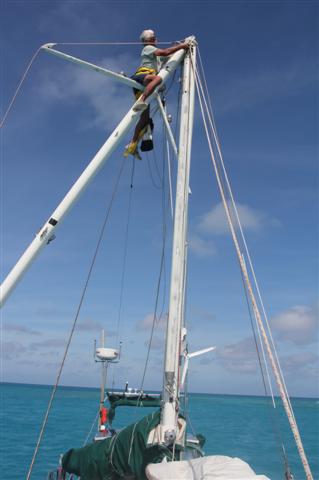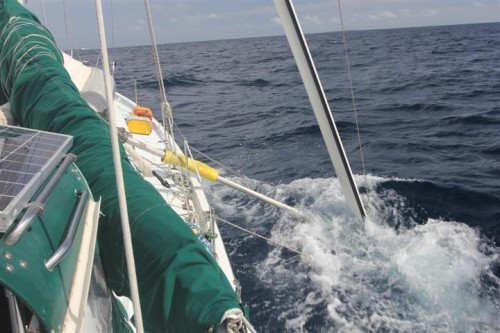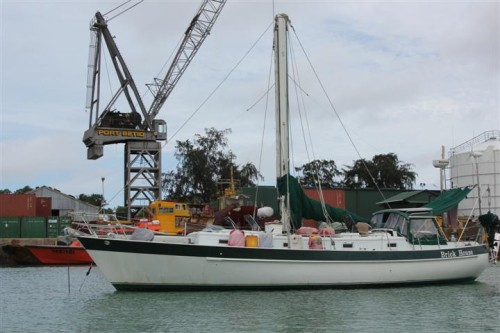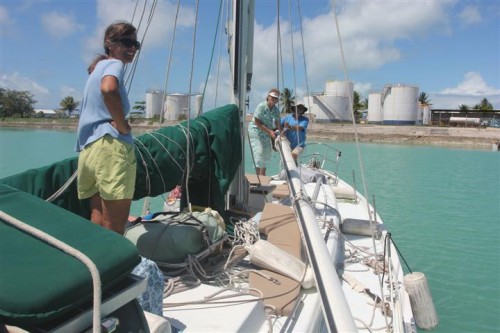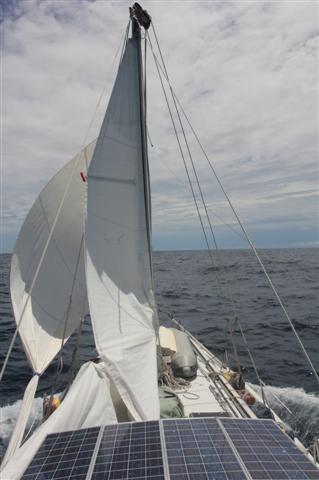
At Kwajalein Atoll, Marshall Islands, one day I was talking to an American cargo ship officer. He was telling me about an incident which happened to him on his very first day of work as a deck officer on a large container ship. We initially got into the discussion as we were commenting on how many Philippinos work on ships around the world. In this situation, he had to jump in the middle of two squabbling Philippino deck hands who just pulled knives on each other. The source of the argument? One called the other a “monkey”! We had a good laugh over that. But now that Rebecca and I have spent months in the Philippines, 7 months in Indonesia and 4 months in Malaysia, we have seen what nasty little animals monkeys can be and that in these countries, to call a person a “monkey”, is derogatory enough to start a fight.

We visited scores of well managed national parks in Malaysia and had the privilege to see all kinds of monkeys. Macaque monkeys are everywhere. They are cute, especially the small ones, but in some areas they have developed little fear of the placid tourists, and this is where the monkeys can become aggressive. They are stealthy animals moving in as a casual group then quickly raiding the tables at the dining area of a park headquarters cafeteria. Most tourists just back off and let the little peeing, shitting, animals take what they want. There are only a few tourists who will swing a plastic chair at the teeth baring, snarling, animals to drive them away and save their lunch for themselves. But the raid and being ripped off by monkeys gives the tourists some fun stories to tell and makes for unique souvenir pictures.
The unusual proboscis monkey, with a very long nose, lives only on the island of Borneo. Their numbers are far fewer than the macaque making them very difficult to find and photograph. But still, rather than tramping all day on park trails, I got my best pictures of a proboscis, sitting in the late day shade, high on a tree branch, at the park headquarters. At 3:30 in the afternoon, it seems so many animals wake up from the forest and head to the central location as though it is some sort of scheduled feeding time. Every tourist is warned though, not to feed the animals. Even the hefty “bearded pigs” ramble in, single file, then spread out to see what might have been dropped on the ground. As the pigs wander through, the macaque monkeys move out of the way like parting waters.

Some of the most dangerous “monkeys” are actually the ape, orangutan . There is no “g” on the end, nor should it be pronounced with a “g” on the end. Orang means “person” and hutan means “wood” or “forest” but in the spelling and pronunciation the “h” is eliminated. Monkeys have tails, apes have no tail. To call someone an “ape” does not seem to have the impact of “monkey” but to further that experiment, I will leave for others. Orangutans only live in a few places on the large island of Borneo and on the Indonesian island of Sumatera. Their numbers have been greatly reduced due to hunting and human overpopulation. Males can grow to hundreds of pounds. But even small Orangutans are incredibly strong and need to be kept at a distance. At one park/orangutan rehab center, where there are twice daily feedings of the apes which come out of the forest. A bulletin board at the park headquarters displays pictures of tourists who were the mauled victims of an out of control orangutan. The orangutans trigger? No one knows for sure. There might have been food in the victims backpack or the orang might just have been in a bad mood that day. These animals have learned that humans are docile and nothing to fear. Those mauled tourists have permanent scars from deep teeth bites in their legs and arms and handicaps including missing fingers. But no one should carry food when there are monkeys or apes around. These animals will do what they can to steal it. But contrary to this, there are a few public parks in Indonesia where macaque monkeys are numerous and rely on tourists buying bananas and peanuts to feed to the monkeys. In these locations, there are numerous park employees who keep a close eye on the tourists to make sure they do not become too comfortable with these wild animals and might mistakenly treat them as a docile pet to touch.

In the Malaysian rain forest, there are all kinds of animals like deer, civet, bear cats (a small black bear), porcupine, clouded leopard, crocodiles, tigers and all sorts of snakes and colorful birds. The problem with hiking park trails, at the end of the day, you usually see only a lot of trees and some very nice waterfalls to cool off in. We visit the local zoos to see what we miss in the woods.
Hiking up and down the mountain trails, in the protected parks we visit, are some of the most impressive trees imaginable. The loggers would love to move into some of these areas. It is not unusual to see trees 5 feet, and more, in diameter and hundreds of feet straight up, like the mast on a large ship. Only near the top does it finally branch out into a bushy crown. There is no relative to these trees in North America but they do remind me of the cowry tree in New Zealand. The lumber from some of the species can easily be described as “iron wood” and is so incredibly dense it sinks as quickly as steel. Nails cannot be driven into the wood without first predrilling the holes. Of course this is a valuable wood so the forests, outside of established parks, of Borneo are quickly disappearing.
Since the tropical rain forest is near the equator, there are two seasons, rainy season and not so rainy season. The annual hot temperature varies little. The number of daylight hours is the same year round. Because of this, it is difficult to tell how old a large tree is. Since it grows at the same rate all year, there are no annual growth rings like trees in North America. But still, it has been determined some of the larger trees are easily a thousand years old.

The conditions must be exactly right for the most rare flower in the world to bloom, as a parasite on the tetrastigma vine. The largest Rafflesia can be over 3′ across and weigh 22 pounds. The flower can stink like a dead animal and has the spongy texture like a mushroom. We had to go to several national parks where these flowers are known to bloom before we found one.
Here are some more images:




















